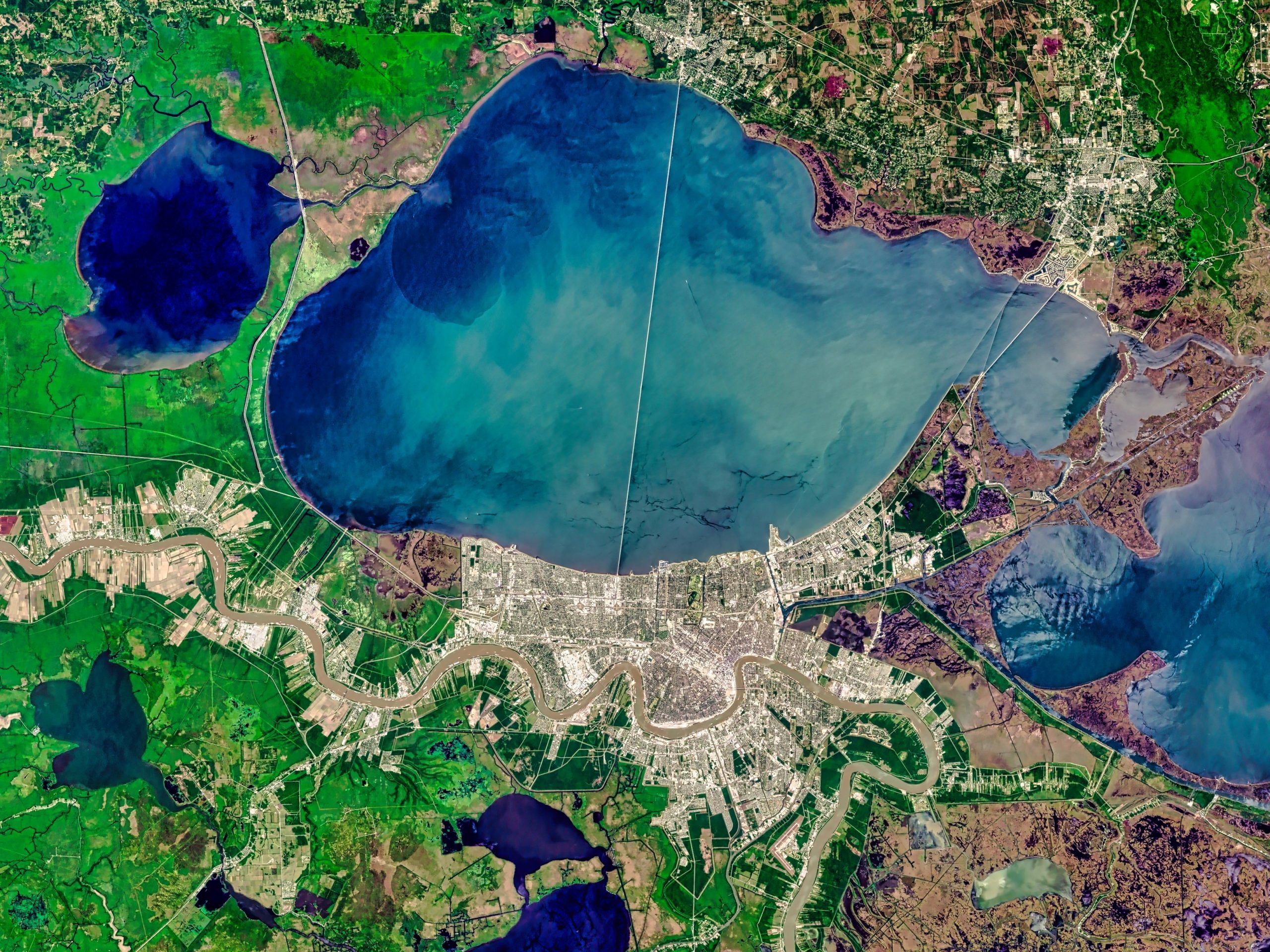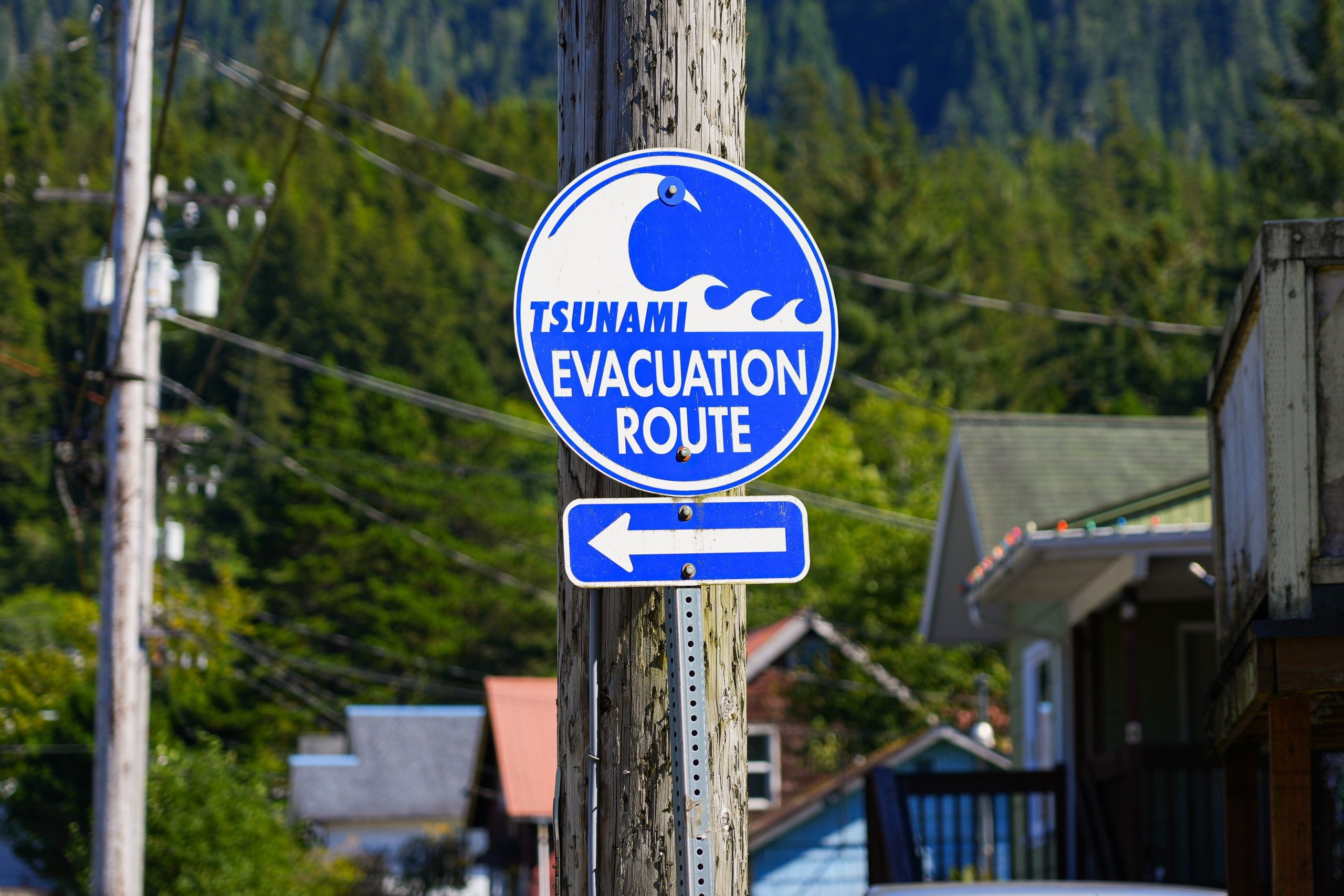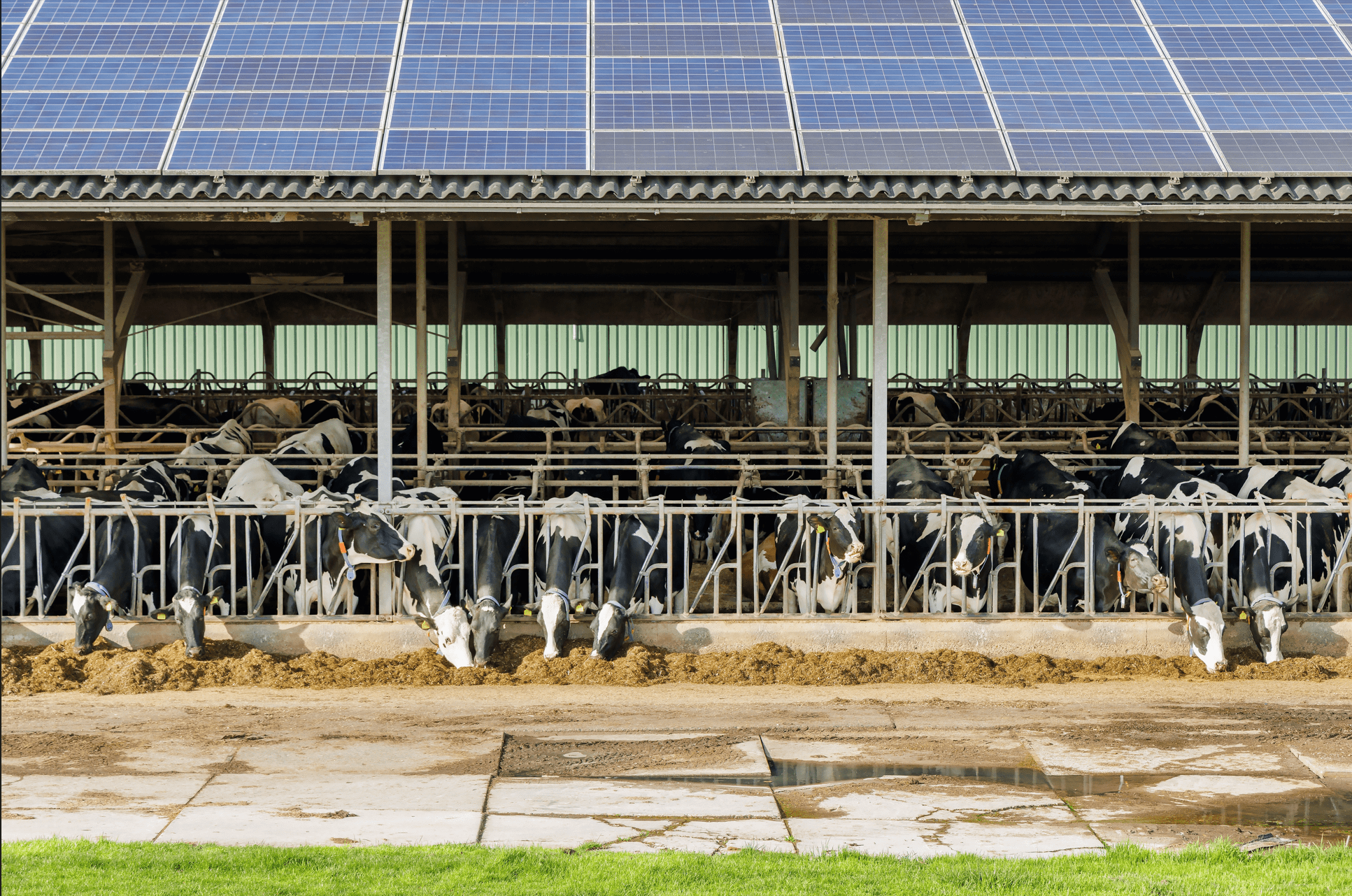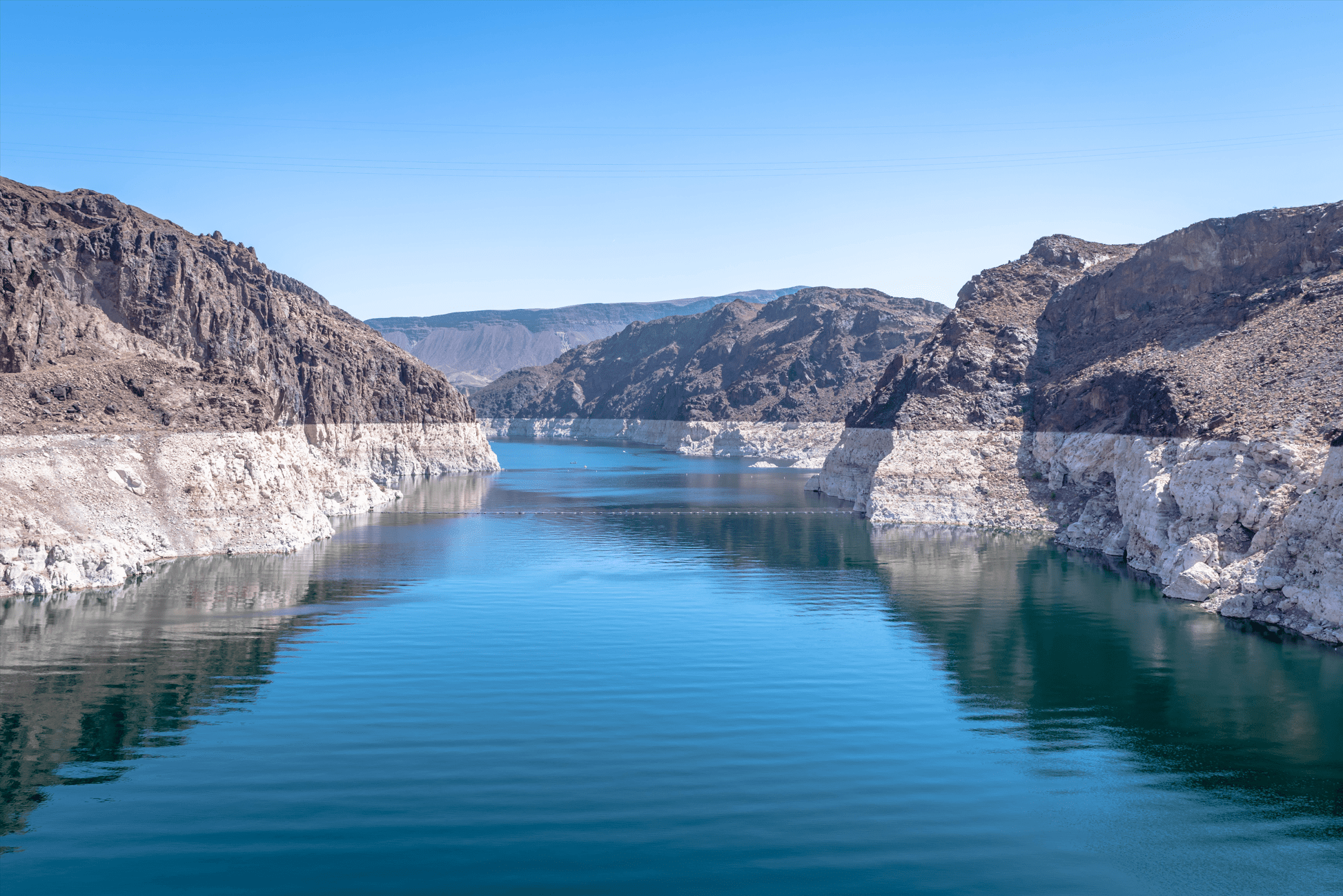
Over the past two decades, Western states — Arizona, California, Colorado, Nevada, and New Mexico — have experienced megadroughts, known as a persistent, long-term drought. While this past dry season was marked by high spring precipitation, easing drought conditions across much of the region, trends indicate that drought and aridity will only worsen due to climate change.
At this juncture, several federal programs have been stood up to address long-lasting drought conditions, such as the $1.6 billion provided to the WaterSmart Grant Program by the Infrastructure Investment and Jobs Act. The Inflation Reduction Act (IRA) also assigned billions to tackle this issue, including $4 billion for Drought Mitigation.
The Bureau of Reclamation (USBR) is implementing the funding. Funding is disseminated in multiple forms — direct federal spending, competitive grants, and cooperative agreements — to federal agencies, state governments, local governments, and Tribal Nations. Thus far, about $2.5 billion of this funding has been awarded, exclusively to projects in the West. The initiative aims to support both short- and long-term actions to safeguard the Colorado River Basin, in addition to comparable Western basins also experiencing drought, like the Klamath, Rio Grande, and Sacramento-San Joaquin Basins.
Projects have been announced in Arizona, California, Colorado, New Mexico, Utah, Washington, and Wyoming, with several spanning multiple states to address drought in the Colorado River Basin and the Rio Grande Basin (Figure 1). In total, $777.5 million will support projects sited in multiple states. Aside from multi-state awards, most funding is going to California and Arizona, two of the largest users of Lower Colorado River Basin water. Over half of the announced funding so far, $1.4 billion, has gone to California, and $373.9 million to Arizona. Additionally, $170.6 million has been awarded to Tribal Nations.
Figure 1: Total Awarded Drought Mitigation Funding by State
Source: Water Program Portal, Outcomes Dashboard | Projects cited in multiple states have their funding proportionally divided by the number of states the project spans.
Funding awards support mitigation actions like direct compensation for voluntary water use reductions, which will help increase water supplies and provide environmental benefits for the Colorado River Basin, and habitat restoration projects ameliorating drought-impacted ecosystems.
The drought conditions of the Colorado River Basin are striking. Water use is governed by an over century-old agreement, the Colorado River Compact, which has been oversubscribed since its inception. The compact is an agreement between seven Western states that source their water from the Colorado River Basin: The Upper Basin’s Colorado, New Mexico, Utah, and Wyoming, and the Lower Basin’s Arizona, California, and Nevada (Figure 2). The problem is simple — too many people with too high water demands in the face of insufficient supply.
Figure 2: Map of the Colorado River Basin
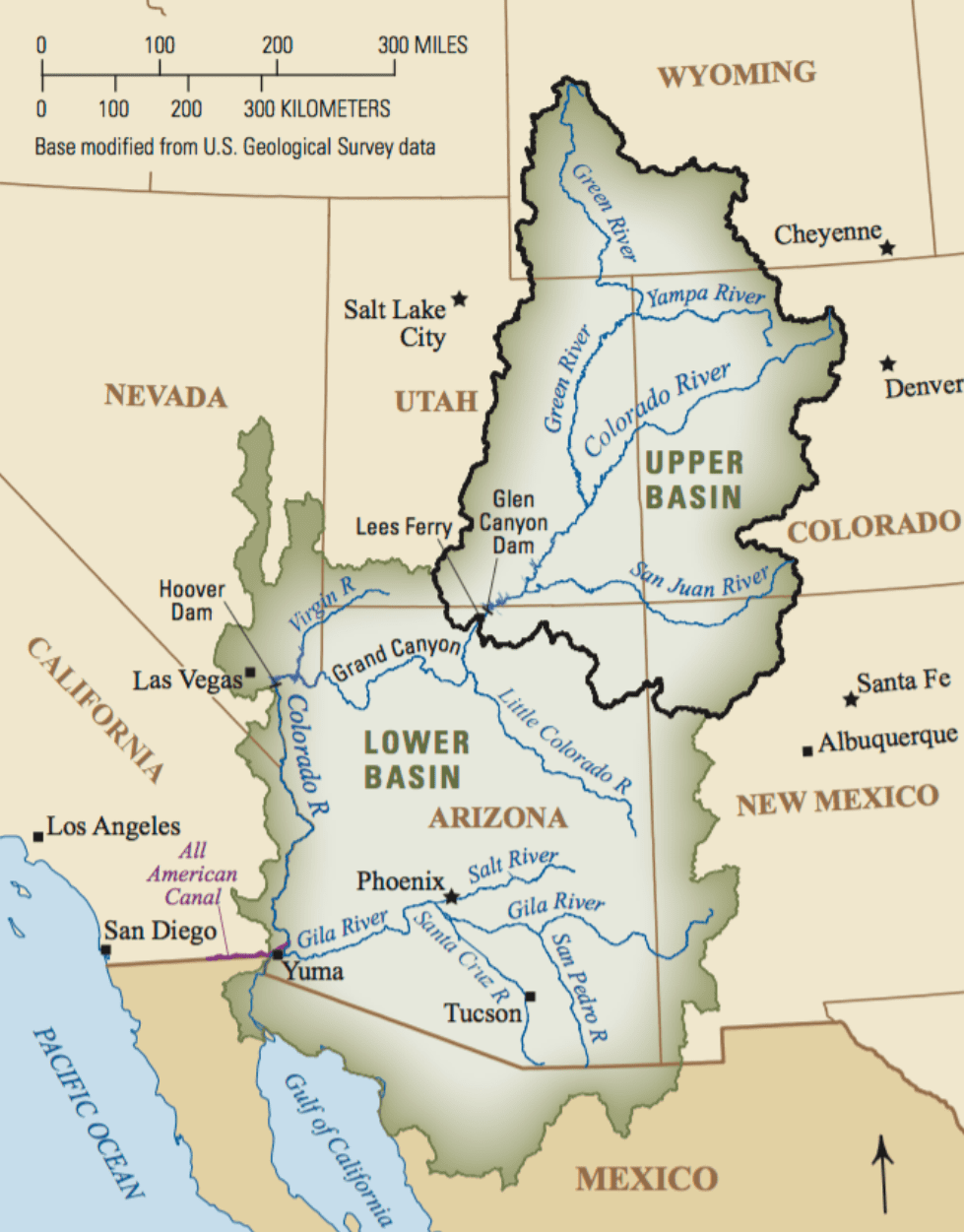
Source: U.S. Geological Survey
Annually, each basin is allocated 7.5 million acre-feet. In the West, water rights are based on “prior appropriation” derived from historical court decisions or permits. Essentially, whoever can prove they were there using the water first has the most senior rights to that water.
Negotiation problems over this limited supply are frequent, like California’s refusal to sign an agreement the other six states signed onto in early 2023. Although in June 2023, all seven states reached a temporary agreement, by March 2024, the Upper Basin states had released their own independent plan that differs strongly from the novel Lower Basin plan. The agreement does not include consideration of Tribal needs or contain Tribal input; the 22 Tribal Nations with recognized rights on the Colorado River have submitted their own plan. The current Colorado River agreement expires in 2026, making speed essential. Talks resumed in June 2024 and are ongoing.
IRA’s Drought Mitigation funding has the potential to ease negotiations by supporting conservation. A $700 million award was issued to multiple states in the Lower Basin to support long-term water conservation in the region. The Imperial Irrigation District — one of the most senior water rights holders with a right to 2.6 million acre-feet of Colorado River water a year — was also recently awarded $590 million in a conservation agreement. Additional water conservation efforts are underway via a separate $178 million award to a project based at the Salton Sea, also in California’s Imperial County. With these awards, USBR hopes to incentivize thirsty Western states to implement efficiency measures and encourage users to reduce their demand, smoothing the path to a successful post-2026 Colorado River agreement.
